The Deva Pro fills a niche by offering Bluetooth connectivity in a pair of open-back, planar-magnetic headphones. Sadly, the tuning is far from perfect.
In 2019, HiFiMAN surprised everyone when they announced the Ananda BT, a pair of wireless, planar-magnetic headphones that were also open-back. It was unlike anything available on the market and had an extremely niche use case.
Fast forward to 2022, and HiFiMAN now has the Deva Pro, a cheaper alternative to the Ananda BT that address some of the key issues of that model, namely the lack of an analog-only mode and heavier weight.
- One of the few open-backed, Bluetooth, planar-magnetic headphones
- Lightweight and comfortable to wear
- Fairly decent battery life of the R2R BlueMini module, although less than advertised using the LDAC codec
- Multiple connectivity options in both wired and wireless modes
- More resolving than the closed-back Bluetooth headphones in this price range
- Metal yoke has sharp edges
- Audible Bluetooth compression (most noticeable in AAC or SBC codecs)
- R2R BlueMini module does not have the most secure fit and connection
- Fatiguing sound signature due to boosted upper-mid and treble regions
- Lack of stage width and depth
- Wired mode sound is lackluster and does not scale with higher-tier amps
Both of these issues are solved on the Deva Pro courtesy of the included BlueMini R2R module that can be detached as needed.
Let’s see if the Deva Pro can match their peers when it comes to sound quality, as they are taking on both wired and wireless planar magnetic headphones.
Technical Specifications
- Form: Open-backed, over-ear
- Drivers: 1 x Planar magnetic driver
- Stealth magnet assembly
- Neo supernano diaphragm
- Impedance (Ohm): 18 ohm
- Sensitivity (dB): 93.5 dB
- Frequency Response (Hz): 20 Hz – 20 kHz
- Removable Cable: Y
- Source Jack: 3.5mm
- Cup/Shell Jack: 3.5mm
- Bluetooth Audio Codec: SBC, AAC, LDAC
- Battery Life (hrs): 8
- True Wireless: N
- Bluetooth Version: 5.0
- Mic: Y (only in BT mode)
- Weight (g): 365 g (with BlueMini module)
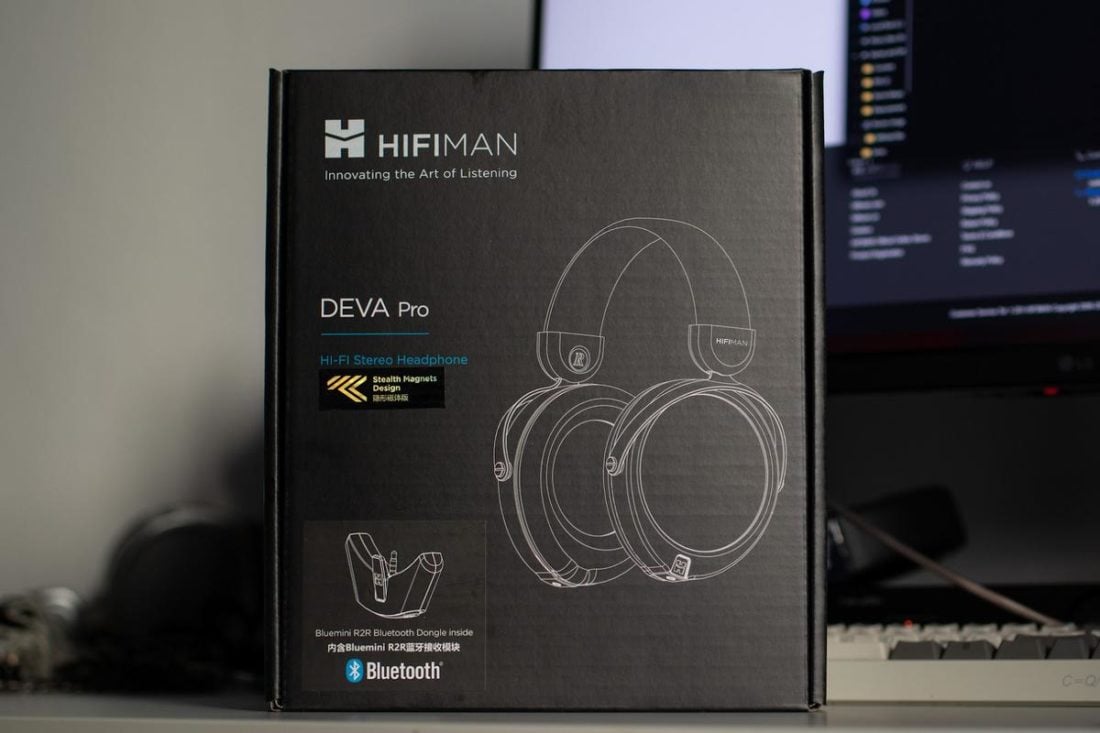
Packaging
HiFiMAN has a simplified look to all their product packaging nowadays, and the Deva Pro are no exception. The stealth magnet sticker points to the revised driver design of this model—more on the driver redesign later in the Sound section.
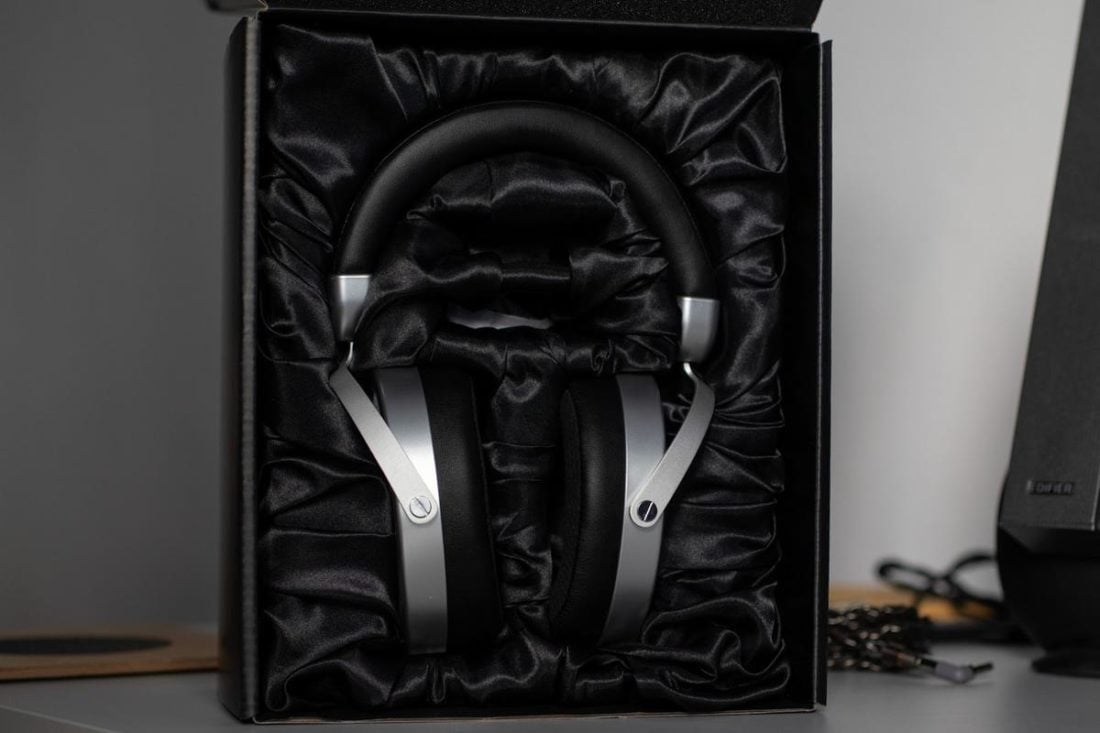
In the box
- HiFiMAN Deva Pro headphones
- 1.5m, 3.5mm terminated cable
- 6.35mm to 3.5mm adapter cable
- BlueMini R2R module
- USB-A to USB-C cable
The supplied accessories are pretty decent considering how notoriously poor the stock HiFiMAN accessories are. For example, their flagship Susvara come with perhaps the least ergonomic stock cable in existence and lacks a carrying case or even an extra set of pads in the package.
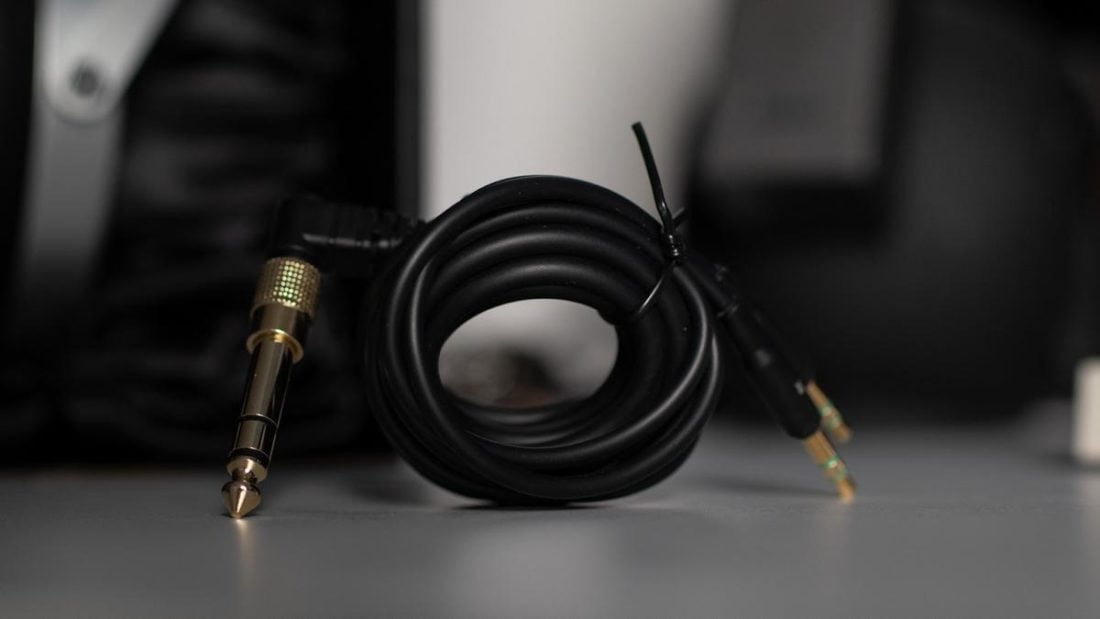
Design
HiFiMAN opted for a slightly different ear cup design than their existing HE-series of headphones or the likes of Arya or Ananda. The shape of the cup is not as oval as the Arya, nor as round as the HE-400se.
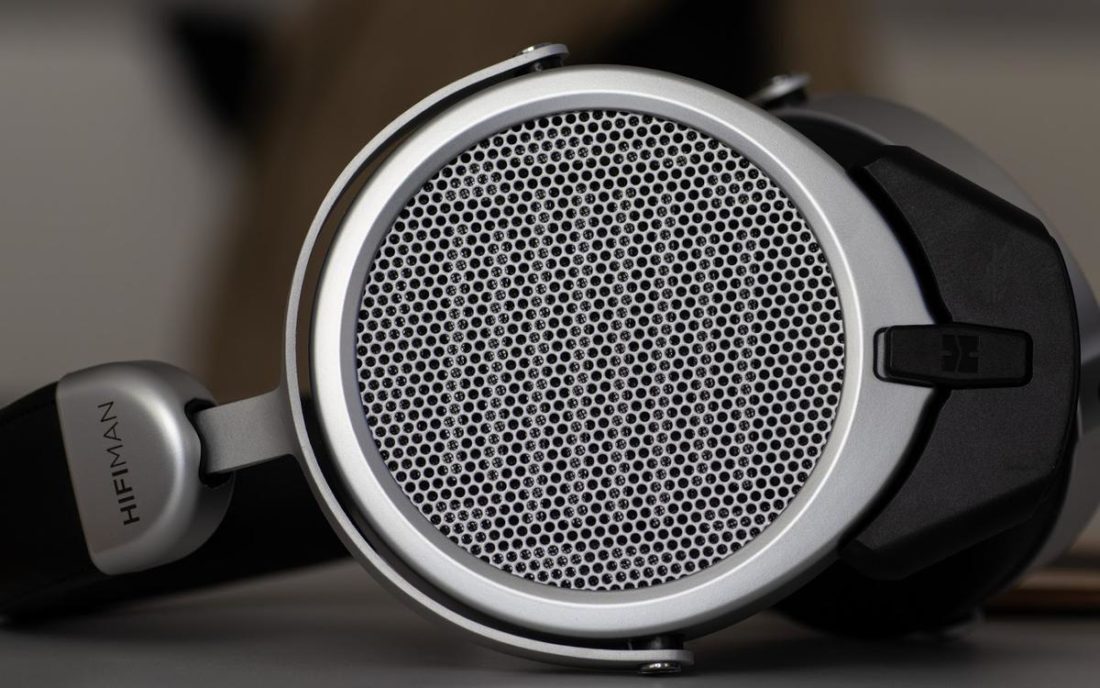
Another less noticeable design difference is the wire running through the underside of the headband from one cup to the other. This wire allows using the BlueMini module to plug into just one earcup and get sound on both sides.
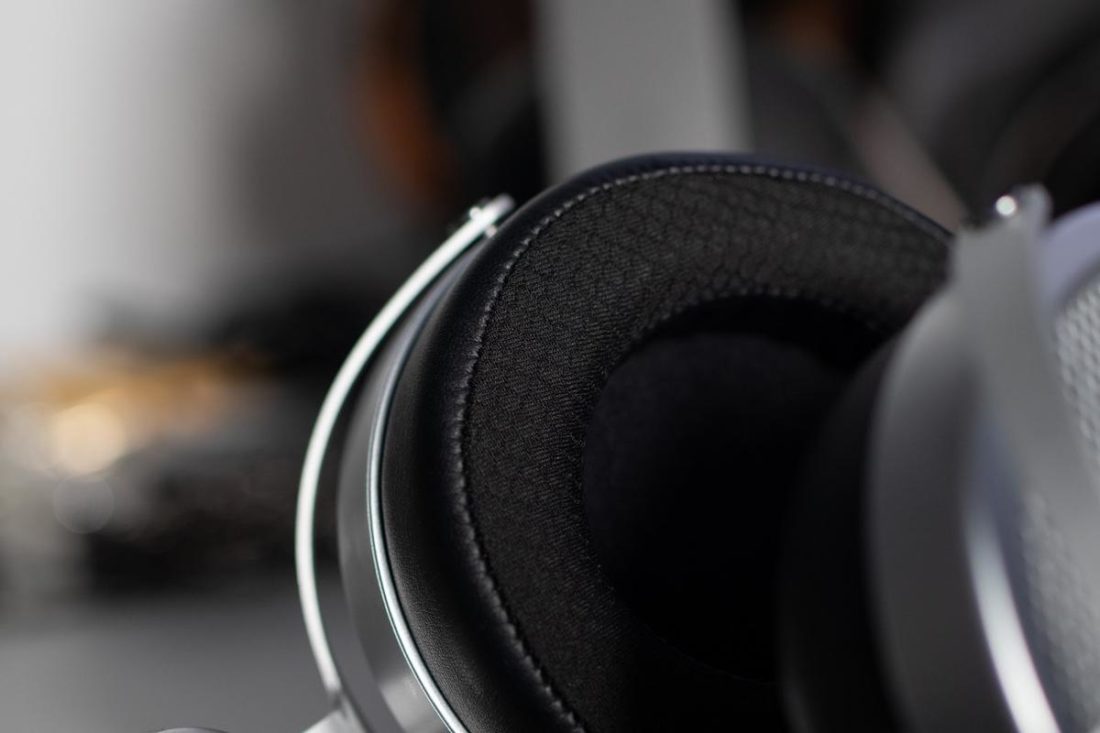
The earcups have a perforated cloth material on the front with a solid pleather surround. The headband is foam-padded as well, though I wish the foam was slightly softer. Nonetheless, no hotspots formed on the temple or the sides of my head during the review period. At the bottom, there are two 3.5mm TRRS ports.
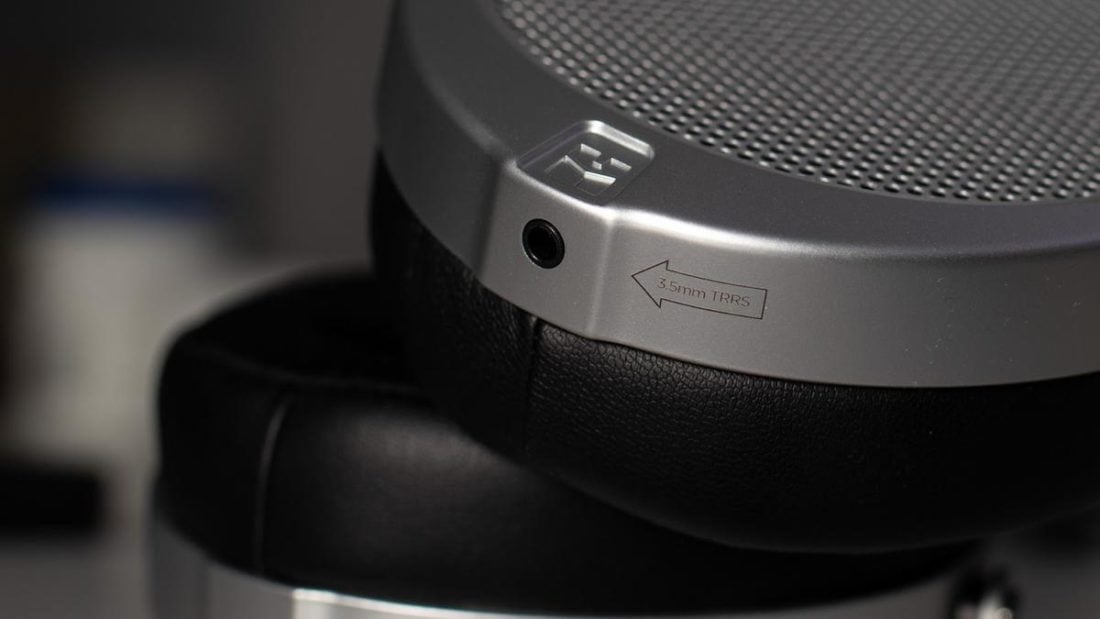
The yoke and headband are made out of aluminum. Unfortunately, the yokes have sharp edges that can be annoying. It’s not sharp enough to cause injuries, but it does illustrate some deficiencies in the fit and finish of the product.
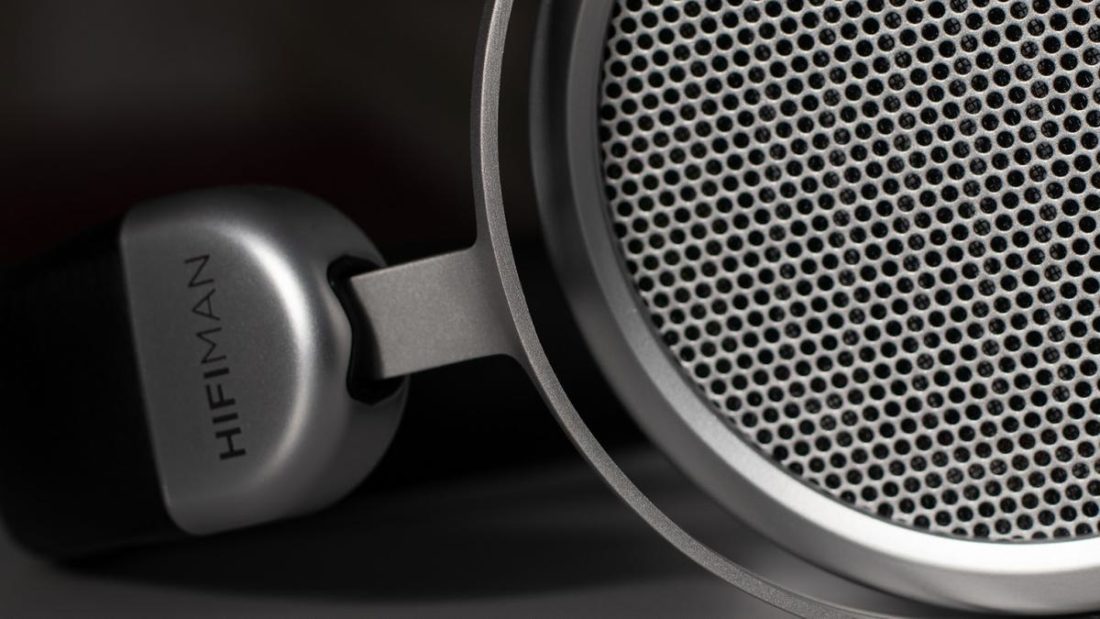
Comfort and isolation
Comfort is excellent due to the lightweight design, plush earcups, and low amount of clamp force. Isolation is non-existent, as expected from an open-back design.
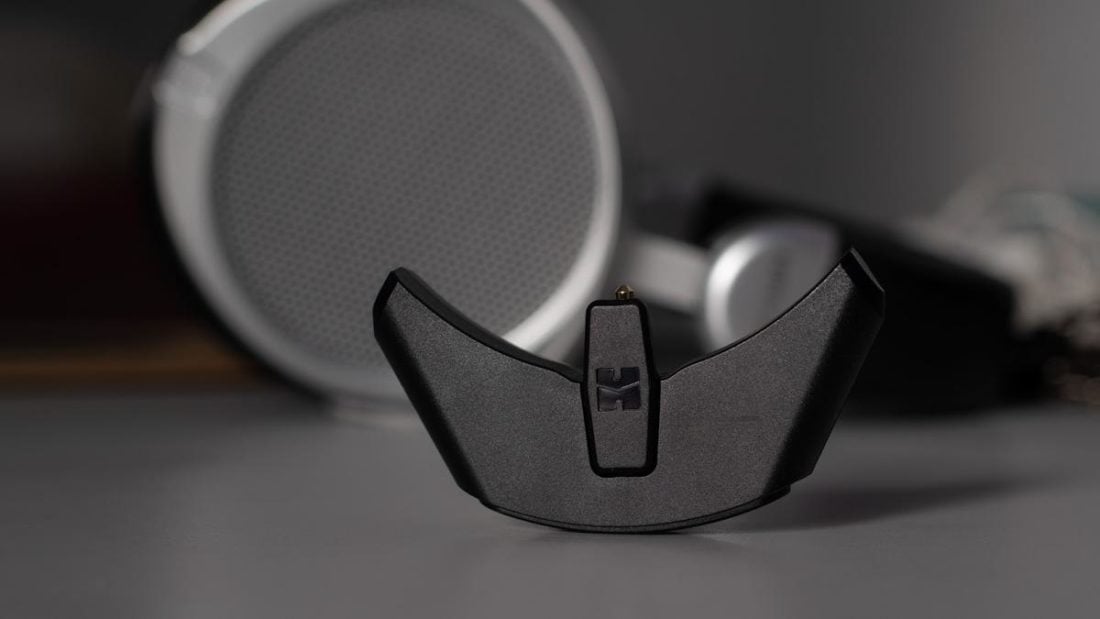
BlueMini R2R module
The highlight of the Deva Pro is the BlueMini R2R module (it can be purchased separately if you wish). This module allows the Deva Pro to become a “Bluetooth” pair of headphones, since the Bluetooth electronics are all inside the module instead of the headphones. The module can be plugged into either earcup.
There is a Type-C port at the bottom that can either charge the module or allows connecting to a computer to act as a DAC-amp. The solitary button can be used to power on or off via long-press, whereas a short-press disconnects the Deva Pro from the current device. A double press takes it into pairing mode.
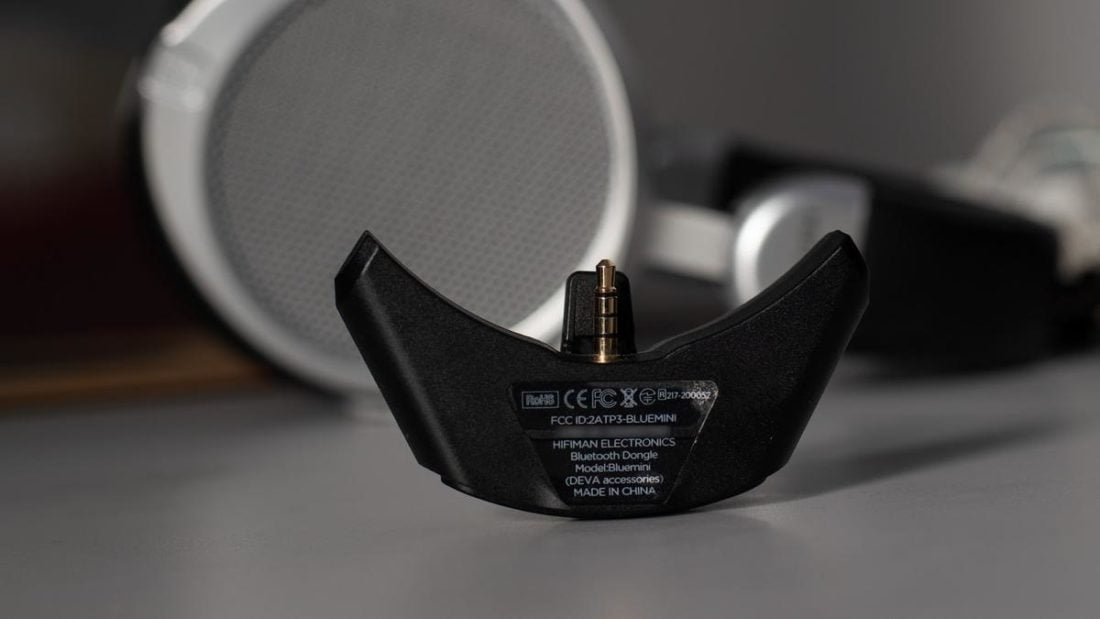
There is also a status LED at the bottom, though voice-prompts are there as well to let you know when the BlueMini has connected, disconnected, or put in pairing mode. Finally, there is a mic at the bottom. It’s serviceable at best with a compressed-sounding voice and little noise cancellation.
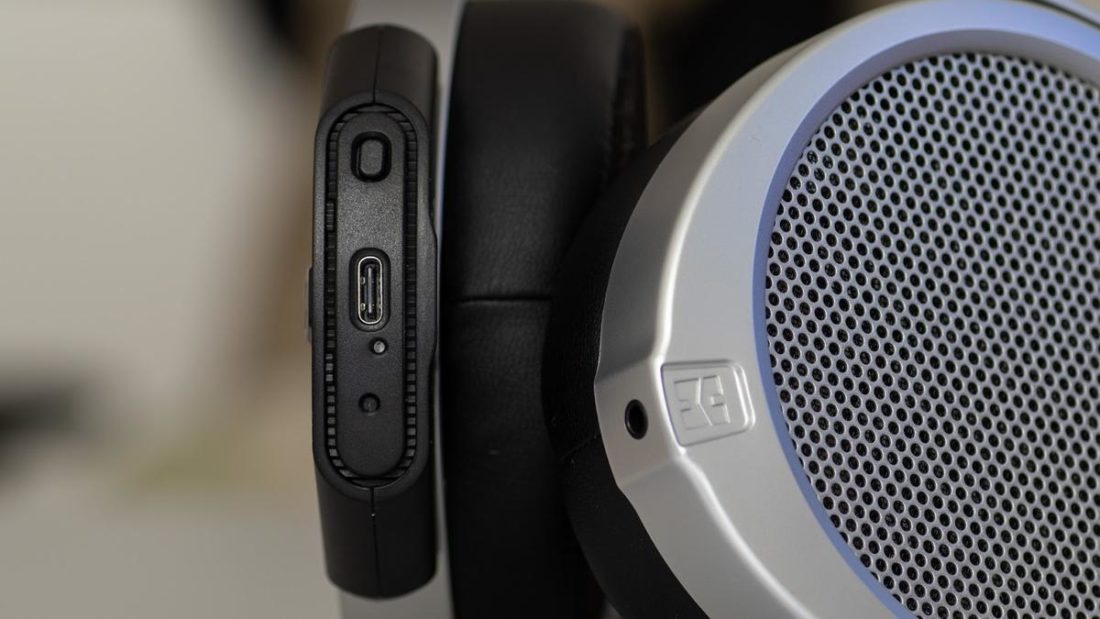
The battery life is rated at 8 hours, although I only got about 6.5 hours connecting via the LDAC codec. This is not as good as most mainstream BT headphones, but, keep in mind, that those headphones do not use planar magnetic drivers.
There is ample power here to get the Deva Pro very loud. A quirk of the module is that the volume increments are not linear when connected via Bluetooth. At lower volumes, it’s too quiet, and then right after 50%, it gets tad too loud for me. Connectivity is stable until 7 meters, then there are occasional connection dropouts.
Internals
HiFiMAN is using their tried-and-tested planar magnetic drivers on the Deva Pro, though they made the driver even more efficient this time. The most notable changes in their latest driver revision are the stealth magnet assembly and the neo-supernano diaphragm.
The stealth magnet assembly has magnets with rounded edges, which apparently reduces the turbulence as sound-waves pass through them. This apparently makes the magnet array almost “acoustically transparent” and reduces distortion.
Meanwhile, the neo-supernano diaphragm refers to the nano-scale thinness of the diaphragm itself, with a sub-micron level voice coil traced onto the diaphragm.
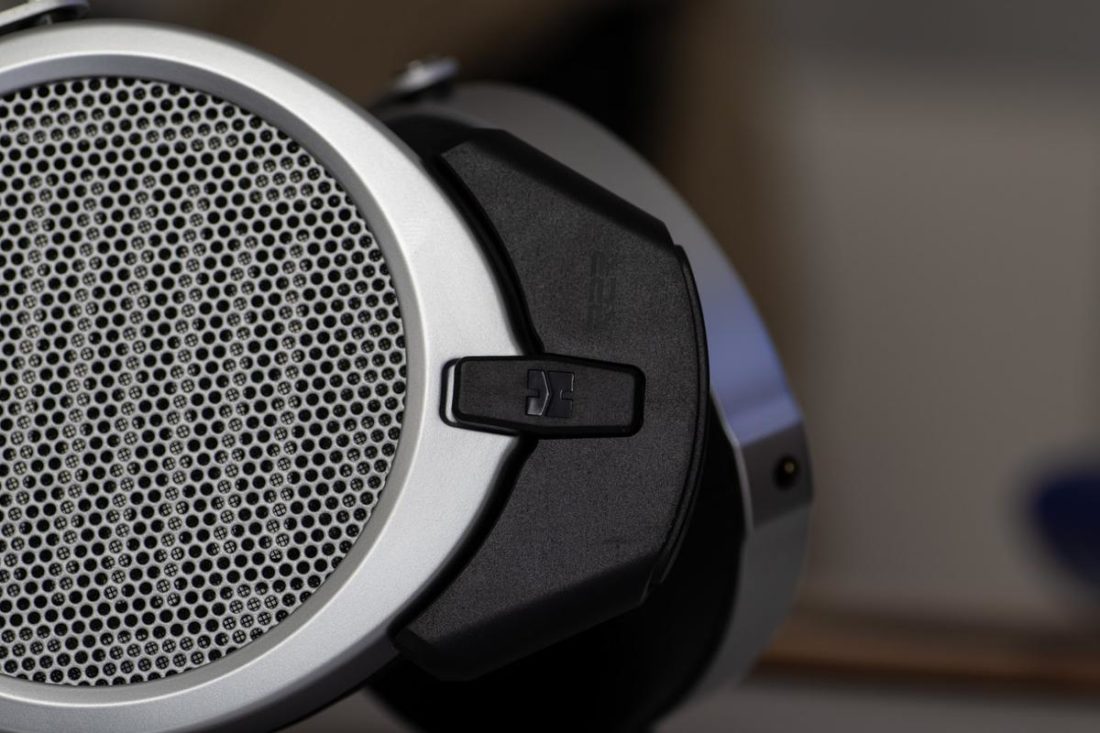
HiFiMAN Deva Pro Sound
The Deva Pro have a bright-tilted sound with the bass being more emphasized in Bluetooth mode, whereas the treble gains more presence in wired mode.
Bass
Bass starts rising from 30Hz and becomes noticeable around 40Hz. Bass response is pretty much flat. In BT mode there is more emphasis near the sub-bass it seems, though the bass sounds rolled-off after 35Hz in all three modes (Bluetooth, USB, and wired).
The bass has a decent amount of punch and slam but lacks physical rumble. Also mid-bass texture is lacking to a degree. Bass is fast, thanks to the planar drivers, but can also veer towards distortion at high volumes.
Midrange
The lower-midrange is well-tuned with male vocals having enough body. String instruments also have a good sense of “bite” in the leading edge of notes. Keyboards and pianos lack the heft or the note-weight to truly sound “grand” but they do not sound anemic in any way.
Unfortunately, the upper-midrange is quite intense. There is no noticeable frequency dip between 2-5kHz, resulting in a very up-front midrange. Such tuning also hampers soundstage depth and microdynamics.
This intense upper-mid focus makes female vocals sound overly energetic at times, and the lack of sub-bass extension coupled with flat mid-bass exposes this further. Colbie Caillat’s Realize is a good example of this intensity.
Treble
Treble is peaky and the boosted upper-treble frequencies cause fatigue in long listening sessions.
Cymbal hits have extra sizzle to them, which I cannot listen to for any extended period. The lower-treble emphasis also adds instances of sibilance, though those are rare.
Sibilance is more evident in wired mode, as the R2R BlueMini module reduces it noticeably. Treble extension is lacking as there is not much response after 12kHz. The boost near 11kHz cannot hide the lack of resonance, instead, it adds an unnatural “sheen” to hi-hats and crash cymbals.
Soundstage and imaging
Soundstage lacks depth no matter which mode you use. Stage width is also compressed in Bluetooth mode but fares better in wired mode. Imaging is average as it’s hard to discern the location of instruments in ordinal directions.
Dynamics and speed
Dynamics are compressed, with little macrodynamic punch and non-existent microdynamic shifts (subtle gradations) in volume. Speed is above-average for the price range, and busy passages could have better instrument separation.
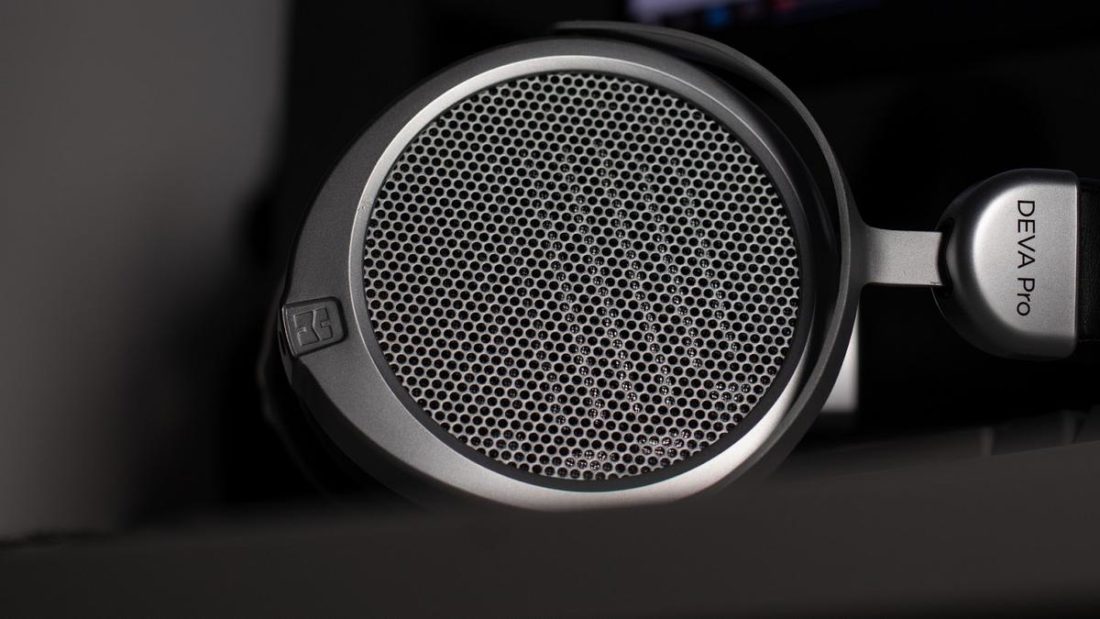
Comparisons
It’s hard to make an “apples vs apples” comparison with the Deva Pro since I have not used another wireless, open-back, planar magnetic pair of headphones.
The Audeze Penrose is wireless and has a planar magnetic driver but they are closed-back. The remaining Bluetooth headphones use dynamic drivers and are tuned very differently, e.g. the Sony WH-1000XM4. Compared to mainstream Bluetooth headphones, the Deva Pro are more resolving in the bass and treble and have better imaging.
Their open-back nature make them unsuitable for commuting, though, and the low clamp force is not ideal when wearing them during physical activities.
When it comes to comparing similar open-back wireless headphones, there are the HiFiMAN Ananda BT but they are priced near the flagship range and would be a very unfair comparison. So, the Deva Pro escape further scrutiny in the comparisons section by being the lone-ranger in their price bracket.
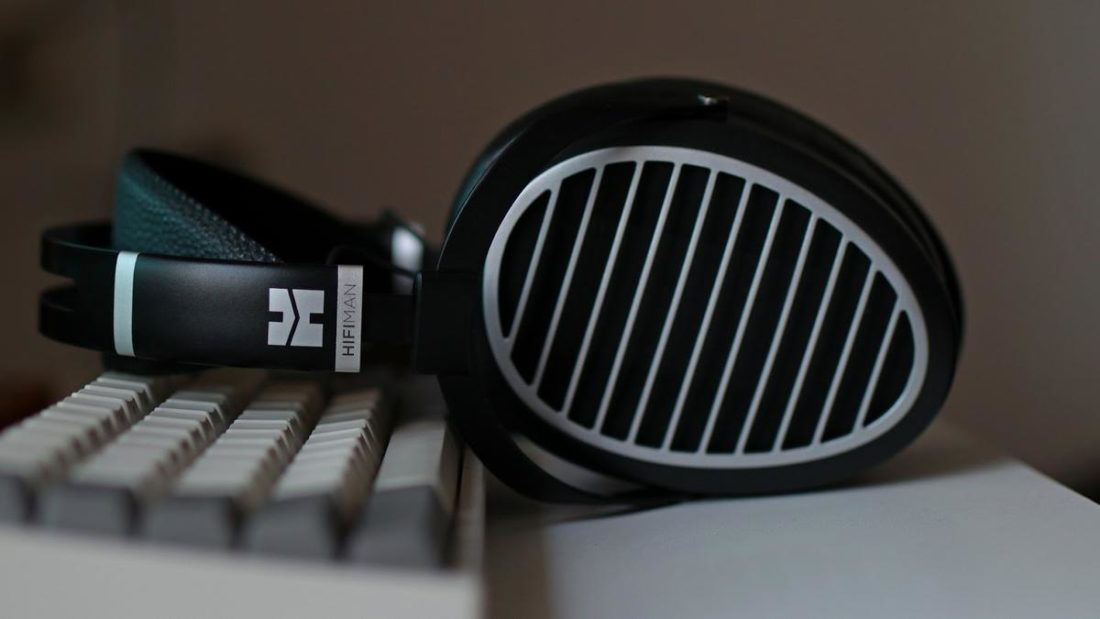
Where to Buy
Conclusion
The HiFiMAN Deva Pro are below average when compared to other wired planar-magnetic headphones in their price range. On the other hand, they are more resolving than the typical wireless, closed-back headphones out there, but also less practical and lack features like ANC (Active Noise Cancellation) that many consumers expect in this price range.
So, the Deva Pro face an identity crisis and do not excel as Bluetooth headphones or as wired planar-magnetic headphones. One potential use-case could be having them as an all-in-one solution, but then you are sacrificing the lifestyle features of the best wireless headphones and the sound quality of the best wired headphones.
The Deva Pro are an interesting experiment, but they are underwhelming with all things considered. I gave them an additional 0.5 as a bonus in the rating for being innovative, but innovation alone cannot hide the fatiguing sound signature and less-than-stellar build.
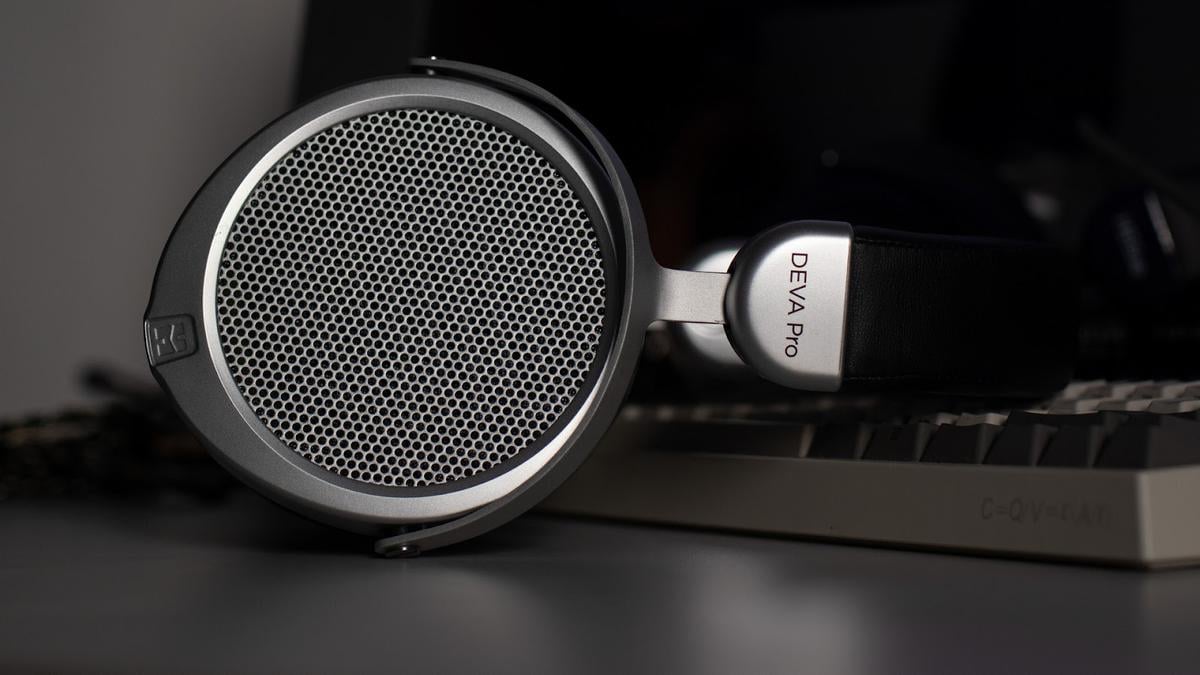
Holy dogs**t take, Batman! O___O But there’s a reason you are LITERALLY the ONLY person on the planet with it… Aka, either you got a bad pair of cans (which is totally possible w/ HiFiMan’s, tbf) or much more likely IMO, you’re just an absolutely freaking crap judge of headphones.
And complaining about open back headphones for being open backed makes you look even MORE unqualified for this job… Nobody but an absolute clueless freaking IMBECILE would be cross-shopping ANC closed back dynamics like WH-XM4’s or XM5’s against open-back planar magnetics like these…
Open backs give you a soundstage that closed backs could only DREAM of. I own both the HiFiMan Deva Pro’s and Sony WH-XM4’s and the latter isn’t even in the same flipping UNIVERSE when it comes to soundstage size, depth, & instrument separation/placement. To say the Deva Pros’ soundstage “lacks depth” considering their price point is absolutely flipping absurd, & directly contradicts literally every single other review of these cans.
And just because a headphone is wireless doesn’t mean it “HAS TO BE for commuting &/or strenuous physical activity”! Having around the house headphones that are wireless is MASSIVELY convenient, and ESPECIALLY so when they have 2x device simultaneous Bluetooth multipoint support like the Deva Pro’s do here!
Also, how in the freaking heck can you claim the fundamentally gimped Ananda BT is better if you’ve “never used a pair of wireless open-back planar magnetic headphones before”???… -_-
… Next time try not to make your ridiculous lies & ignorance so blatantly obvious…
Lol TL;DR = This review couldn’t possibly be any more absolute & utter trash if it had literally stumbled out of a freaking landfill….
Man, looks like I hit a nerve with this one.
“either you got a bad pair of cans” – nope, not bad. It sounds as it sound. As for me being a bad judge of headphones, well, I don’t think so.
“complaining about open back headphones for being open backed” – the Cons list doesn’t have any complaints about this being open-back, nor was that considered in the rating. I only said how this lacks isolation whereas many BT headphones offer the exact opposite feature. Potential buyers need to know what they’re getting into.
“Open backs give you a soundstage that closed backs could only DREAM of” – the Final Sonorous III (closed-back), similarly priced, has better stage depth and width. I know because I own one. Also Sennheiser HD820 has better staging than many open-backs. You should try these headphones, you might change your mind.
“To say the Deva Pros’ soundstage “lacks depth” considering their price point” – they do lack that compared to certain other wired open-backs in this price range. Again, Deva Pro can be used in analog-only mode as well, so they will naturally be judged against other wired, open-backed headphones.
“Having around the house headphones that are wireless is MASSIVELY convenient” – maybe, but the sound is compromised this way, and I see no reason why I should compromise when I am at the comfort of my home. And again – I don’t get why pointing out that the clamp is too low for physical activities is an issue. You may not care, but some other might.
“the fundamentally gimped Ananda BT is better if you’ve “never used a pair of wireless open-back planar magnetic headphones before” – I think this here is my bad, as I forgot to add “a pair of wireless, open-back planars under USD $500 range”. I have used and reviewed the Ananda BT. Check here: https://www.head-fi.org/showcase/hifiman-ananda-bt.24092/review/23492/
“This review couldn’t possibly be any more absolute & utter trash” – you have simply chose to ignore the issues I raised, something which other readers will pay more attention to.
In the end, my issue with the Ananda BT is not that I can’t jog or run with them, or that they are open-backed (lol that one isn’t even in the cons list what the…), or that they lack stage depth. My biggest peeve is that they have a shouty, bright tonality that is fatiguing and not suitable for long-term listening. Had they sounded right, I would’ve rated them 4/5 at the very least.
So keep calm and read the review properly before jumping the guns and stumbling over because you forgot to tie your shoelaces.
LOL – Totally agreed with you. The moment I saw he complaints about open back without ANC. Okay… I’m done.
Hello, Bluemini only goes into left earcup not either cups as you mentioned. Also only left side is 3.5mm TRRS.
Hi, thanks for pointing that out. Will be fixed.
Hello, what do you think is better: deva pro, Final Sonorous III or dt 700 x pro? I just already bought the deva pro and if there really are headphones at a similar price closed type with BETTER soundstage I will sell my deva pro…
I personally use the Sonorous III the most, though in terms of resolution I’d say Deva Pro is the best among these.
In terms of staging, Sonorous III is better indeed. But if you are happy with the purchase, I think Deva Pro is a unique pair that has good flexibility due to the Bluemini module.
What do you mean when you use the word resolved/resolving to describe the sound quality?
I’m a newbie, so I apologise in advance if this is a stupid question. I’m currently deciding between these Deva Pros, to the Sennheiser PXC 550 ii, momentum 3s, and the sony alternatives. I mostly work at home and don’t frequent public transportation, and I’m looking to find a pair of headphones to help me enjoy music more deeply. Do you have any advice/reccomendation for me? Thanks in advance 🙏
Hi Jeng,
“Resolving” basically means how much details said headphone can portray. So, a highly resolving pair of headphones will make you discover subtle details in the music tracks.
In case you are mostly planning to use at home, open-back headphones should not be an issue. In that case, I’d highly recommend the Sennheiser HD560S (check out my review of that here for more details). They do not need a lot of power (can be driven from a regular dongle) and has a very balanced sound.
If you want something cheaper, try the Hifiman HE-400se (also reviewed here). With some simple mods, they become excellent. Even without mods, they aren’t bad at all. They may need above-average amplification though, so I’d recommend at least a balanced dongle like Moondrop DAWN.
I’m sorry but the moment I read where it read the Cons doesn’t have ANC I had to stop reading. Since when open back headphones have ANC??? Secondly, you mention this headphone is under perform for compared to other headphones in it price range but didn’t elaborate which one. The price of the bluetooth combo does drive the price up, but without the bluetooth version is another story. Please do reply and elaborate your input.
Hi Denis,
First of all, the list of “cons” do not include the lack of ANC. I have repeated throughout the article that the Deva Pro are very “unique” and should be judged as a pair of open-backs, just as it should be judged as a pair of BT headphones.
I did not dock any points for the lack of ANC or lack of isolation. It makes no sense when these are open-backs. I simply mentioned it because many users “expect” to find these features in BT headphones. So it was more of a heads-up than an outright con.
There is one other pair of headphones in this price range that performs better than the Deva Pro, though they are not open-backs: Stax Spirit S3. Please give them a try if possible. I find them to be far more balanced tonally with better bass and midrange. Staging though is as average as the Deva Pros (to my ears).
Without the BT combo, these are decent deals, but then you have HE400se which are very close sonically and costs half. Moreover, I am reviewing the BT version, so I cannot bring up the non-BT version since that would require a very different set of criterion to judge the product.
Hope I could clarify my stance. The rating is primarily due to the sound in the end, and other “lifestyle features” are peripheral in my book.
I think, this review is one of the worst ones i have come across – you talk of distortion doesn’t provide any objective values of db at which it starts. If you are comparing with price range what are you comparing with lcd1 or sundara(and what do you find it lacking?). Of course devapro is better than he400se(which in itself a benchmark at 150$ range being in hall of fame in may trusted sites). You compared with audeze’s Penrose or audeze mobius they are some of the bassy planars which needs work with eq. Stax spirit s3 is a joke doesn’t come close to deva pro’s technical abilities like resolution, soundstage, vocals etc(need EQ to sound good, plus no way of amping them etc). I have been critical of reviews earlier, but this downright a bad one on another level.